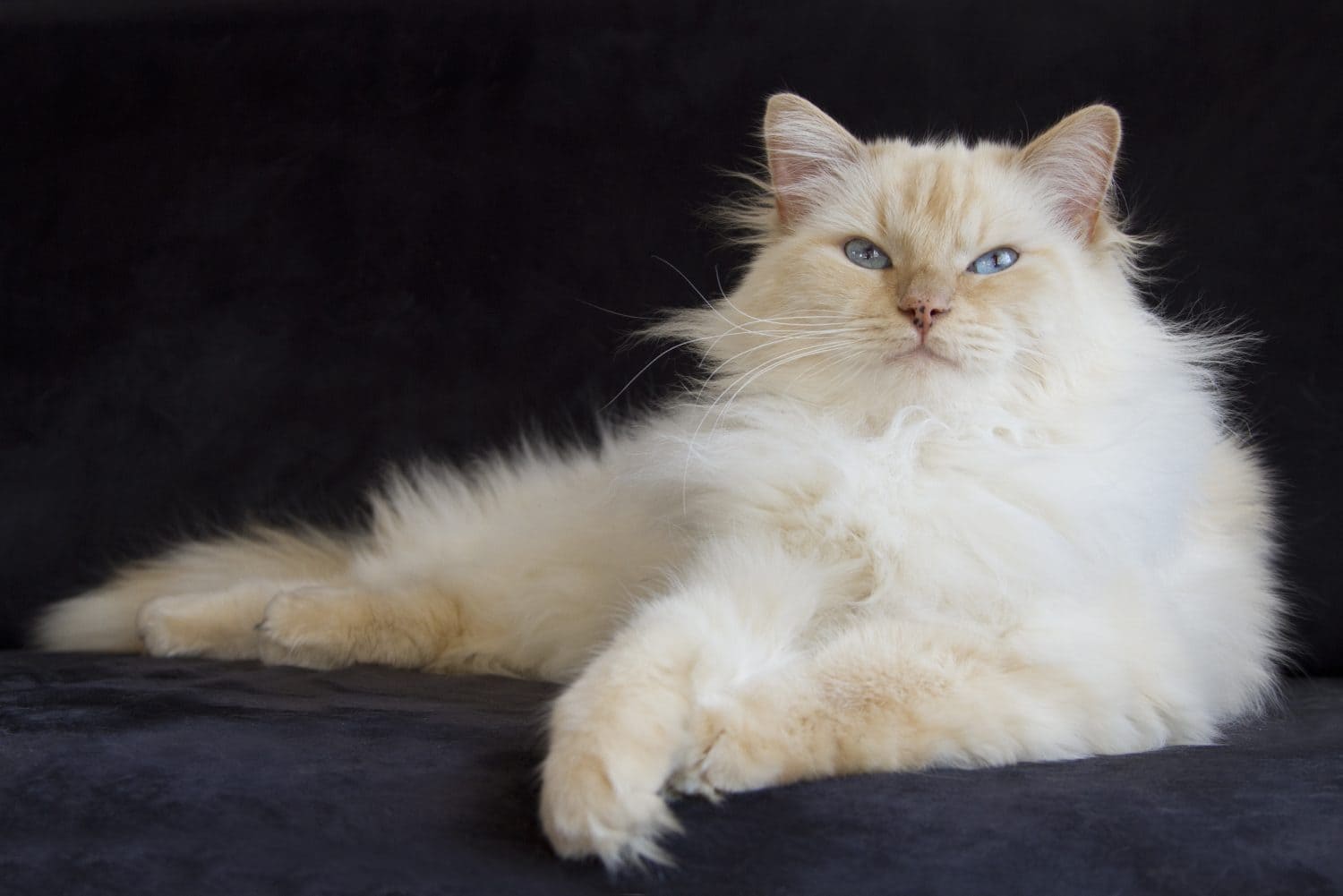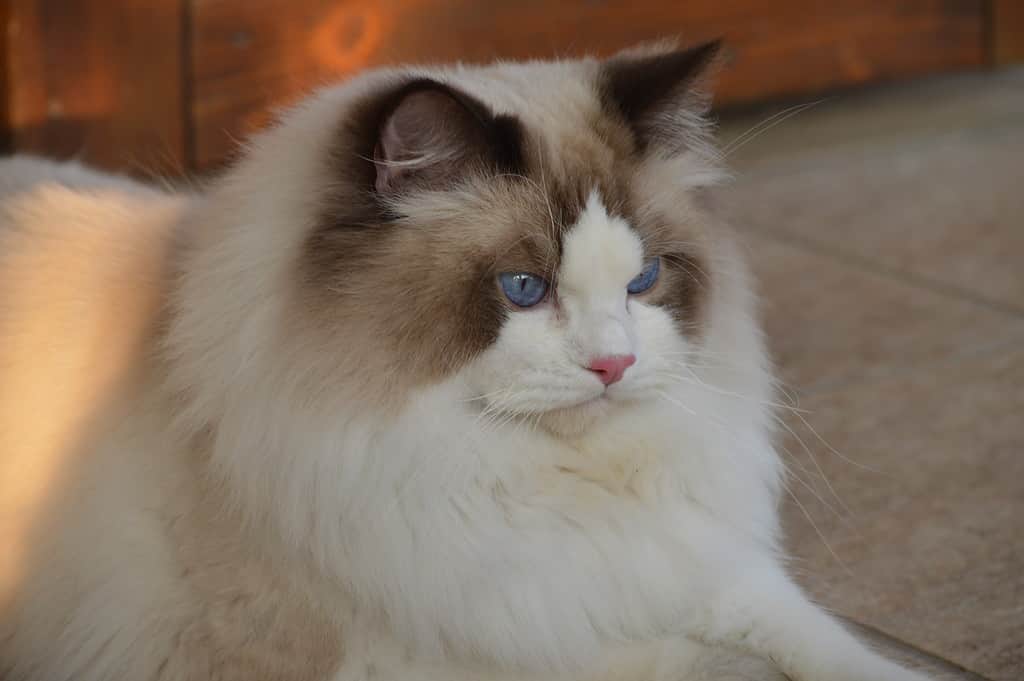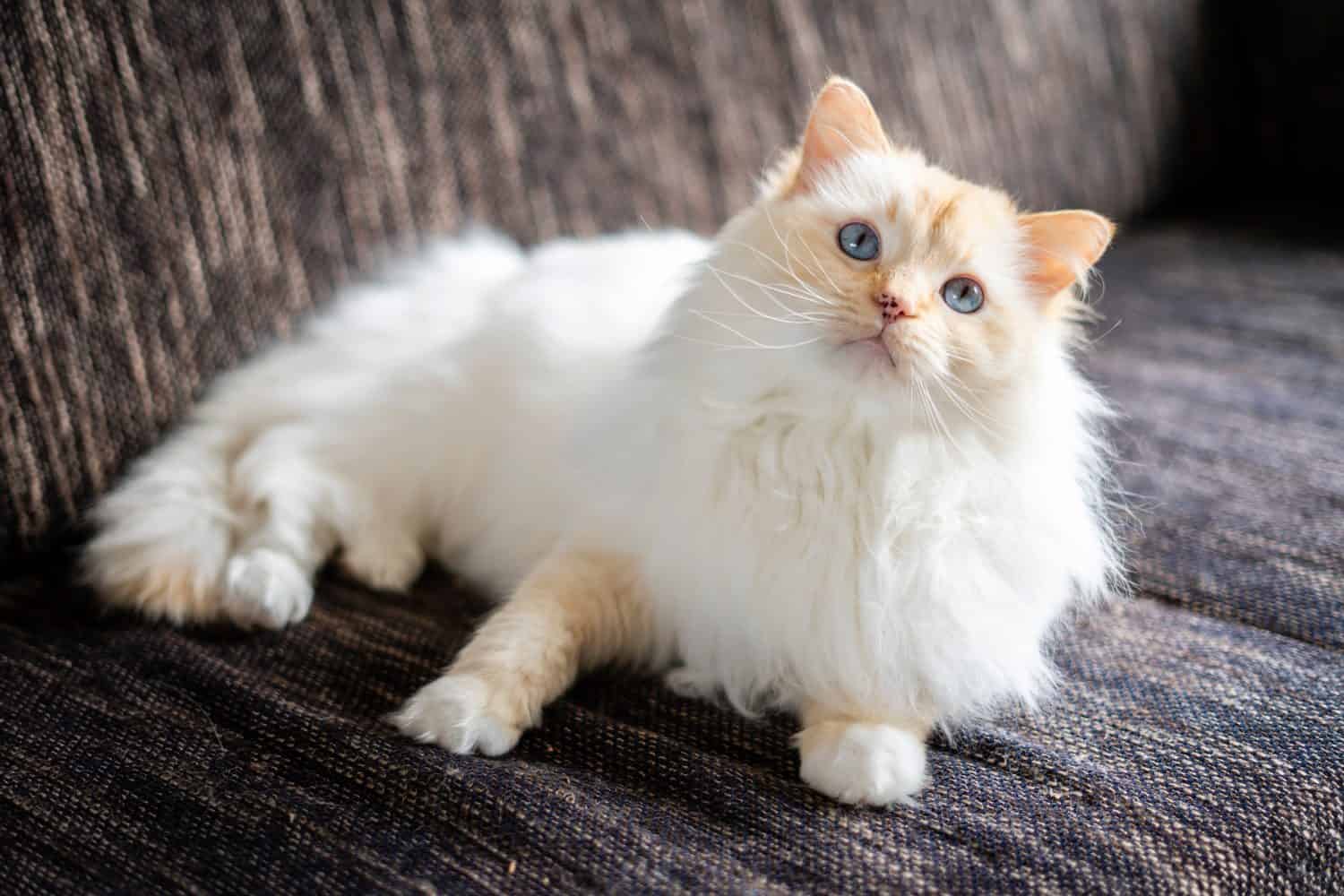The ragdoll is a breed that has gained widespread popularity since their development in the 1960s. These cats come in many colors, but only eight are recognized by The International Cat Association (TICA). In addition to their main coat color, this breed also comes in three patterns: bicolor, color point, and mitted. Because of the great variety of patterns and colors, ragdolls come in many different combinations. But have you ever wondered which color is the rarest? Today, we’ll discuss the eight coat colors that are recognized by TICA and rank them from rarest to most common.
1. Cream

Cream ragdolls range in color from a pale apricot to a light orange.
©Dagmar Hijmans/Shutterstock.com
When talking about the rarity of ragdoll coat colors, there’s absolutely no doubt that the rarest of all is cream. This coloration stems from a watered-down version of the flame ragdoll. Less than 3% of all ragdolls globally have this coloration, making them the most scarce among the eight. Although these cats make great house pets, they’ve also taken the show cat world by storm, and many have found themselves well-decorated with awards!
2. Lilac

Ragdolls are one of the largest cat breeds.
©CX23882-19 / Public domain – License
Only second to cream in rarity is the lilac ragdoll. Much like the cream color, lilac originated as a diluted version of a chocolate ragdoll, and it was selected for by breeders until it became its very own recognized color. Because this coloration is so beautiful and scarce, finding one may prove to be very difficult. Lilac ragdolls are highly sought after and seldom seen, so they can be very expensive to purchase.
3. Chocolate

Grooming your ragdoll a few times a week is important, as they are susceptible to developing mats.
©Ariannatarchini / CC BY-SA 4.0 – License
Chocolate ragdolls are less scarce than lilac and cream ragdolls. However, when compared to other colors, chocolate is certainly a rare sight to behold. Visually, these cats are similar to seal ragdolls, but their fur is a lighter shade. Their body color is a white, ivory shade whereas their points (face, ears, feet, and tail) are a milk chocolate shade, which is where this color gets its name from. These cats are undeniably beautiful, so it’s easy to see why they’re in such high demand.
4. Flame

Ragdolls are one of the most “puppy-like” cats.
©Ria Peene/Shutterstock.com
Flame ragdolls are also sometimes referred to as “red.” These cats are similar in color to cream ragdolls, however, they have much more pronounced shades of orange and red throughout their coat. The majority of their body consists of an ivory base, and their points are where deeper hues of orange and red are concentrated.
5. Fawn
Fawn-colored ragdolls and cinnamon-colored ragdolls (which we’ll discuss in a bit) are very similar to one another. These two colorations aren’t accepted by all cat associations, but TICA classifies them as official, so we’re counting them in our list. Even though this breed has been around for decades, fawn ragdolls didn’t emerge until the 2000s. Fawns are slightly more diluted in color than cinnamon ragdolls, and for this reason, they’re just slightly less common.
6. Cinnamon
As we stated above, cinnamon ragdolls are more concentrated in their coat color when compared to fawn ragdolls. To the untrained eye, they may look similar to chocolate or seal ragdolls, but their coat is redder in tone, and similar in color to cinnamon itself. Even though TICA accepts cinnamon ragdolls as an official color of the breed, they are not allowed to be entered in shows. According to Ragdoll Cats World, “…these cats would be disqualified from a championship competition for not conforming to breed standard.”
7. Blue

On average, ragdolls live between 12 and 15 years. However, some have lived into their 20s.
©oussama el biad/Shutterstock.com
Although they may be widely available, blue ragdolls are a timeless beauty and a classic look of the breed. As for rarity, they’re only slightly less common than our number-one pick, but that’s definitely a good thing. This coloration is in high demand, and luckily, there’s enough supply to meet it. Because of this, prices for blue ragdolls are much more reasonable, and it’s quite common to see them up for adoption as well.
8. Seal

All purebred ragdolls have deep, blue eyes.
©A-Z-Animals.com/Alanna Davis
When you’re picturing a ragdoll cat, you’re likely visualizing a seal ragdoll. The seal coloration proudly represents the breed, and what better coloration could there be? These cats are characterized by their deep, dark faces which are complemented by their piercing blue eyes. Much like the chocolate ragdoll, these cats have an off-white coat with dark brown points on their ears, tails, feet, and faces.
Summary of the Rarest Ragdoll Colors
| Ranking | Ragdoll Color | Percentage |
|---|---|---|
| #1 | Cream | 3% |
| #2 | Lilac | 4% |
| #3 | Chocolate | 5% |
| #4 | Flame | 5% |
| #5 | Fawn | 7% |
| #6 | Cinnamon | 7% |
| #7 | Blue | 30% |
| #8 | Seal | 39% |
The photo featured at the top of this post is © Dagmar Hijmans/Shutterstock.com
Thank you for reading! Have some feedback for us? Contact the AZ Animals editorial team.






